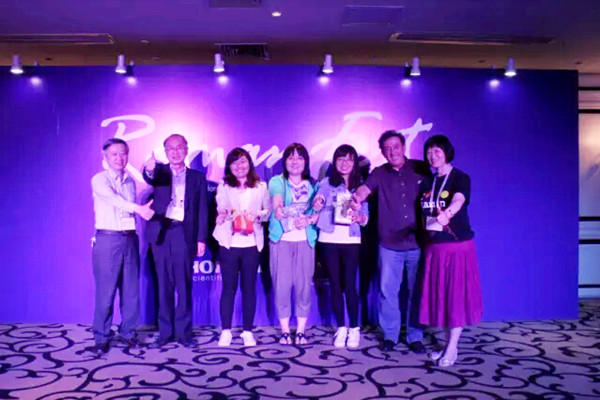In the third International Conference on High-end Application of Raman Spectroscopy (RamanFest), University of Michigan- Shanghai Jiao Tong University Joint Institute (UM-SJTU JI) EE Class 2010 Ph.D. student Jing Long won the second prize, among the 30 finalists, in the student poster contest with her presentation: “Reproducible 10^10 electromagnetic SERS enhancement in gold nanosphere-plane junctions under radially polarized laser focusing excitation.” (link) More than 20 Judges from around the world who were also invited speakers in the conference graded the students’ posters according to their innovation level, paper content, presentation and communication skills.
Surface-enhanced Raman Scattering (SERS) at single molecule level is a detection technique with ultra-high resolution and sensitivity and has the potential for analyzing almost any trace amount of chemical substance. Moreover, single molecule SERS can provide information of molecular dynamics and in-situ molecular structures which would otherwise be buried in a large ensemble of molecules. However, there still lacks a well-controlled and reproducible method for obtaining single molecule Raman spectroscopy by means of top-down fabrication techniques.
 Jing Long (fourth left) with other winners and VIP
Jing Long (fourth left) with other winners and VIP
Jing Long’s work is to address this challenge. According to Jing, her poster is the extended work of her research results orally presented at last year’s Conference on Lasers and Electro-Optics (CLEO: 2014, a major conference in the field of optoelectronics) (link)held in San Jose, California, USA. Jing Long is a member of Professor Tian Yang’s Nanophotonics Lab (link), which is devoted to developing a new SERS device of vertical optical antenna integrated with spiral ring gratings. Theoretical calculations reveal that the incident laser beam and scattering Raman light can be trapped in a nanometer intense focal spot with 10^7 increase in the electric field energy density. Experimental results shows that their designed structure along with its peculiar excitation scheme can achieve an average SERS enhancement factor (electromagnetic enhancement + chemical enhancement) of over 10^11 within the Raman shift range of lower than 2000cm^-1, which are promising for most single non-resonant molecules detections.
RamanFest is an annual international conference that features the current state of advanced applied Raman spectroscopy through presentations and discussions from academic andindustrial leaders in the field. The 3rd RamanFest, organized by HORIBA Scientific and Xiamen University, was held in Xiamen, China, from May 6 to 8, 2015. This year the theme is on the latest developments in the application of the Raman spectroscopy in life science and materials science, and in SERS, TERS and other technologies. The conference was attended by two dozen scholars from China, the United States, Britain, France, Germany, Japan, Singapore, South Korea and other countries. The special session of poster contest gave young scholars opportunities to showcase their latest research results and to exchange with internationally renowned scholars.





